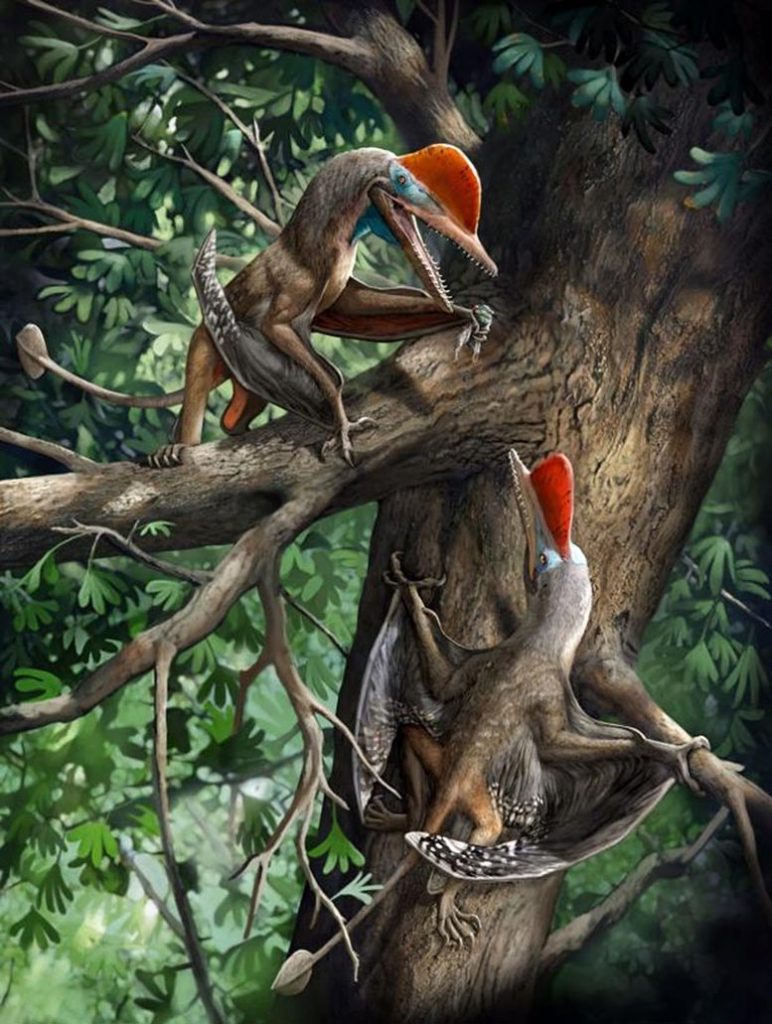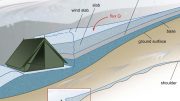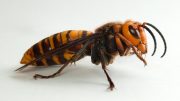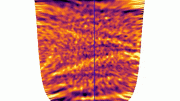A new 160-million-year-old arboreal pterosaur species, dubbed ‘Monkeydactyl’, has the oldest true opposed thumb — a novel structure previously not known in pterosaurs.
An international team of researchers from China, Brazil, UK, Denmark, and Japan have described a new Jurassic pterosaur Kunpengopterus antipollicatus, which was discovered in the Tiaojishan Formation of Liaoning, China.
It is a small-bodied darwinopteran pterosaur, with an estimated wingspan of 85 cm. Most importantly, the specimen was preserved with an opposed pollex (“thumb”) on both hands.
The species name ‘antipollicatus’ means ‘opposite thumbed’ in ancient Greek, in light of the opposed thumb of the new species. This is the first discovery of a pterosaur with an opposed thumb. It also represents the earliest record of a true opposed thumb in Earth’s history. The researchers published their discovery today in the journal Current Biology.
A true opposed pollex is mostly present in mammals (e.g. primates) and some tree frogs, but extremely rare among extant reptiles except for chameleons. This discovery adds to the list that darwinopteran pterosaurs such as K. antipollicatus also evolved an opposed thumb.
The research team scanned the fossil of K. antipollicatus using micro-computed tomography (micro-CT), a technique making use of X-ray to image an object. By studying its forelimb morphology and musculature, they suggest that K. antipollicatus could have used its hand for grasping, which is likely an adaptation for arboreal life.
In order to test the arboreal interpretation, the team analysed K. antipollicatus and other pterosaurs using a set of anatomical characters related to arboreal adaptation. The results support K. antipollicatus as an arboreal species, but not the other pterosaurs from the same ecosystem. This suggests niche-partitioning among these pterosaurs and provides the first quantitative evidence that at least some darwinopteran pterosaurs were arboreal.
Fion Waisum Ma, co-author of the study and PhD researcher at the University of Birmingham, said: “The fingers of ‘Monkeydactyl’ are tiny and partly embedded in the slab. Thanks to micro-CT scanning, we could see through the rocks, create digital models and tell how the opposed thumb articulates with the other finger bones.
“This is an interesting discovery. It provides the earliest evidence of a true opposed thumb, and it is from a pterosaur — which wasn’t known for having an opposed thumb.”
Xuanyu Zhou from China University of Geosciences who led the study commented: “Tiaojishan palaeoforest is home to many organisms, including three genera of darwinopteran pterosaurs. Our results show that K. antipollicatus has occupied a different niche from Darwinopterus and Wukongopterus, which has likely minimized competition among these pterosaurs.”
Rodrigo V. Pêgas from Federal University of ABC, in Sao Bernardo, Brazil, said: “Darwinopterans are a group of pterosaurs from the Jurassic of China and Europe, named after Darwin due to their unique transitional anatomy that has revealed how evolution affected the anatomy of pterosaurs throughout time.
“On top of that, a particular darwinopteran fossil has been preserved with two associated eggs, revealing clues to pterosaur reproduction. They’ve always been considered precious fossils for these reasons and it is impressive that new darwinopteran species continue to surprise us!”
Reference: “A new darwinopteran pterosaur reveals arborealism and an opposed thumb” by Xuanyu Zhou, Rodrigo V. Pêgas, Waisum Ma, Gang Han, Xingsheng Jin, Maria E.C. Leal, Niels Bonde, Yoshitsugu Kobayashi, Stephan Lautenschlager, Xuefang Wei, Caizhi Shen and Shu’an Ji, 12 April 2021, Current Biology.
DOI: 10.1016/j.cub.2021.03.030
The team was made up of researchers from: China University of Geosciences; Chinese Academy of Geological Sciences; Beipiao Pterosaur Museum of China; Federal University of ABC; University of Birmingham; Hainan Vocational University of Science and Technology; Hainan Tropical Ocean University; Zhejiang Museum of Natural History; Aarhus University; Copenhagen University; Fur Museum (Museum Salling); Hokkaido University; China Geological Survey; Dalian Natural History Museum.










Pterosaur is a flightless dinosaur it is a dinosaur serrated teeth claws link to ornithosuchus allso climber .pterosaur is very aquatic smooth skin web toe .flying animal do not have heavy armor skull crest on top of skull or behind these crest can be found in duck bill dinosaur some of them are very aquatic with smooth skin clearly they are aquatic they have crocodilian tail and they are not tetanuran dinosaur with stiff land tail .armor crest allso found in the true crocodilian the mesoeucrocodylia voay .duck bill dinosaur share unique occified tendon with pterosaur . I think it is this dinosaur deinocheirus has a duck face has fuse tail like birds and pterosaur .deinocheirus likely is a tyrannosaur .pterosaur allso has long skull a aquatic feature nose push Back allso aquatic feature the advance pterosaur have flexible tail like gator the primitive won have tetanuran stiff tail pterosaur allso have crocodilian kink snout the advance kind .pterosaur bird feature does not mean it can fly gator has bird feature it can’t not fly.pterosaur wing skin is same as crocodile batman arm skin pterosaur was sting ray mimic .that why great predator the advance tyrannosaur the semi aquatic spinosaurus prey on them in water pterosaur lack of fourth trochanter this show it was not a land animal other aquatic dinosaur allso have this feature and lack of fourth trochanter does not mean it’s not a dinosaur .the weak human thumb of pterosaur is just primitive feature from the past or dead end feature remnants or it’s dinosaur sea otter new way of eating I did not know that the weak thumb can use for eating only thought it is for climbing that why I say maniraptoran is a bird and still saying they have climbing claw dinosaur have grasping claw because they could not climb tree the ankle bone is fuse a land feature they can not sprawl that why crocodilian have peg ankle because it’s not fuse the peg show it was fuse from there dinosaur ancestor the peg is different in gator and ornithosuchus one is right the other is left both are dinosaur ankle it show it was fuse in the past .pterosaur big wing show it was very fast animal in water and big brain faster than the semi aquatic small wing Nile crocodile. Because Nile crocodile hunt on land pterosaur only hunt in water it’s not a mix use animal .all through history dinosaur was all ways fast animal that why crown group of dinosaur the great predator dinosaur the tyrannosaur group some mesoeucrocodylia eat plant they were mostly predator .the greatest tyrannosaur the gator inside of body is high tech the heart is more advance than birds and mammal .dinosaur was advance before they go into water just like mammal the whale .pterosaur is clearly is a primitive dinosaur palate teeth like eoraptor bird like skull the thin skull .they have advance feature like stiff tail a tetanuran feature a bipedal feature.primitive pterosaur lack kink snout like tetanuran only tetanuran with kink snout is spinosauridae .tetanuran was a lot older pterosaur and proterochampsa is close to tetanuran they are prototetanuran dinosaur .clearly proterochampsa is a dinosaur all ankle bone is fuse that better than 4 finger dinosaur.